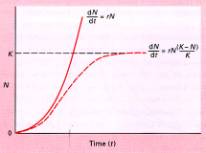 Expression
ExpressionNavigating home

The great aim is accurate, precise, and definite description.
T. E. Hulme, British Philosopher, poet and soldier.
The great aim is accurate, precise and definite description. The first thing is to recognise how extraordinarily difficult this is. It is no mere matter of carefulness; you have to use language, and language is by its very nature a communal thing; that is it expresses never the exact thing but a compromise --that which is common to you, me and everybody.
But each man sees a little differently, and what he does see, he must have a terrific struggle with language, whether it be with words or the techniques of other arts. Language has its own special nature, its own conventions and communal ideas. It is only by a concentrated effort of the mind that you can hold it fixed to your own purpose.
I always think that the fundamental process at the back of all the arts might be represented by the following metaphor.
You know what I call architect's curves – flat pieces of wood with all different kinds of curvature. By a suitable selection from these you can draw approximately any curve you like. The artist I take to be the man who simply can't bear the idea of that "approximately." He will get the exact curve of what he sees whether it be an object or an idea in the mind. I shall here have to change my metaphor a little to get the process in his mind. Suppose that instead of curved pieces of wood you have a springy piece of steel of the same types of curvature as the wood. Now the state of tension or concentration of mind, if he is doing anything really good in this struggle against the ingrained habit of technique, may be represented by a person employing all her fingers to bend the steel out of its own curve and into the exact curve which you want. Something different to what it would assume naturally.
There are then two things to distinguish, first the particular faculty of mind to see things as they really are, and apart from the conventional ways in which we have been trained to see them. This is itself rare enough in all consciousness. Second, the concentrated state of mind, the grip over oneself which is necessary in the actual expression of what one sees.
To prevent one falling into the conventional curves of ingrained technique, to hold on through infinite detail and trouble to the exact curve you want. Wherever you get this sincerity, you get the fundamental quality of good art without dragging in infinite or serious.
p. 29, New York Review of Books, 5-15-03, A. Alvarez, Making it New.
Hints: Interpreting the author's meaning.
Architect's curves: a device for drawing non-linear designs used by graphic artists and architects who design buildings.
consciousness: the mental awareness of a situation in relation to memory, experience and conditions, as opposed to the unconscious popularized by Sigmund Freud and psychoanalysis when Hulme was writing.
metaphor: a comparison of two unlike things without resort to using the words "like" or "as;" in contrast to a simile, the metaphor is a figure of speech an underlying characteristic of using language figuratively. see antonyms.
Six parts of the author's essay
1. How really difficult the task is to describe, define and capture accurate representation in language.
2. He argues that visions are personal, however the language used to communicate these ideas to others is communal.
3. He uses a metaphor to make his point clearly.
4. How to resist the "ingrained habit of technique." [compare this to trained incapacities or bias]
5. Two required habits of mind for adequately accurate expression.
6. Acquiring the sincerity necessary for good art.
more about words | free writing | vocabulary | Writing | Writing papers | about worldviews
Vocabulary pages





